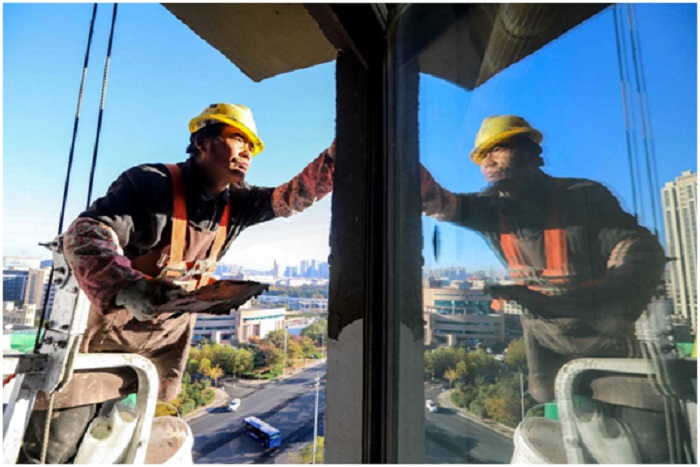



China will implement an action plan for urban renewal, according to a draft outline for the country’s 14th Five-Year Plan (2021-2025) for National Economic and Social Development and Long-Range Objectives Through the Year 2035.
Deputies and members attending the “two sessions,” the annual meetings of China’s top legislative body National People’s Congress (NPC) and top political advisory body Chinese People’s Political Consultative Conference (CPPCC), said the action plan is of significant importance for satisfying people’s ever-growing needs for a better life.
“To implement the action plan for urban renewal is a prerequisite for cities to adapt to new development trends and achieve high-quality development,” said NPC deputy Yang Weiguo, who’s also the mayor of Zhuzhou, central China’s Hunan Province.
As of the end of 2020, the percentage of permanent urban residents stood at over 60 percent, Yang said, adding that China has entered an important period of urban renewal, in which it should shift its focus from sole massive construction to working on both lines of renovating existing resources and restructuring incremental resources.
This year’s government work report said that government investment will be weighted toward projects which will help significantly improve the people’s wellbeing. Rebuilding and renovation of 53,000 old urban residential communities will begin, and the public service standards of county towns will be raised.
“The action plan of urban renewal is an effective solution to problems emerging amid urban development,” said Wu Xiaodong, deputy to the NPC and mayor of Lishui, east China’s Zhejiang Province. Cities emphasized a lot on construction speed and scale during past development, which resulted in prominent problems of fragmentization of urban planning, construction and management, he explained.
The implementation of urban renewal action plan will bolster areas of weakness, largely improve the quality of cities, and comprehensively lift living quality, living environment and cities’ competitiveness.
China’s Ministry of Housing and Urban-Rural Development listed major tasks of urban renewal last year, including enhancing urban spatial structure, implementing projects of urban ecological restoration and functional maturation, advancing construction of a new type of urban infrastructure, and promoting innovation of old urban residential communities.
Lishui, by renovating urban villages, has not only constructed nearly 20,000 resettlement apartments, but also advanced the implementation of 75 major livelihood projects concerning education, healthcare and other issues in downtown areas, Wu introduced.
By promoting high-quality development, cities will be built into a beautiful place where human and nature coexist in harmony, Wu added.
Urban renewal is a project for both livelihood and development. Statistics indicated that both China’s urban GDP and fixed-asset investment accounted for nearly 90 percent of the country’s total, and urban total retail sales of consumer goods also made up over 85 percent of the total. NPC deputies and CPPCC members believe that cities are an important sector for China to expand domestic market, bolster areas of weakness, facilitate investment, promote consumption, and build a strong domestic market.
Wu said the renovation projects for urban villages facilitated not only the construction of resettlement apartments, but also commercial complexes. Some nostalgic alleys have also been built into tourist sites, he added.
“We implemented community projects with market-oriented methods, which optimized the layout of commercial, community and industrial areas, significantly upgraded our industries, and created new consumption opportunities,” he said.


The Executive and members of the.


The Acting Director, FCT Directorate of.


President Bola Ahmed Tinubu has been.



Barely a month after resignation of.


An Abuja based Legal Practitioner, Osuagwu.



Convener of Equitable Remedy, Mrs. Magaret.


Contractors handling the contract for city.


Nigerian government may have concluded plans.


The Diplomatic Correspondents Association of Nigeria.


A rights group, “Follow Me Talk.
Leave a Comment